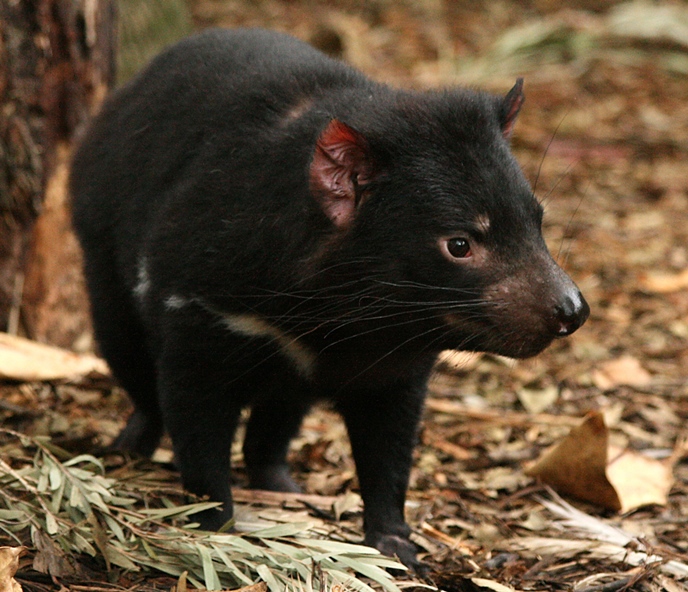The Tasmanian devil (Sarcophilus harrisii) is the world's largest living marsupial carnivore. For tens of thousands of years, this fierce animal could be found throughout the continent of Australia, as well as inhabiting the island of Tasmania. However, scientists surmise that a combination of factors led to the extinction of the Tasmanian devil from the Australian mainland about 3000 years ago. These factors likely included the hunting and killing of Tasmanian devils by humans, extremely low levels of genetic diversity, climate change, and competition with and predation from other Australian megafauna (particularly dingoes). Thus, Tasmanian devils have been confined to Tasmania for the last 3000 years. Now, in 2020, conservationists have reintroduced a group of 26 captive-raised Tasmanian devils to the Barrington Tops Wildlife Sanctuary in New South Wales in an attempt to establish a nascent population on the Australian mainland. If the Tasmanian devil population thrives in this location, conservationists hope that ecosystem conditions that once existed in Australian coastal scrublands and forests can be restored, creating a more balanced state. Currently, the ecosystem balance on the Australian mainland has been disrupted, particularly due to the presence of numerous invasive pest species (for example, foxes and feral cats). Conservationists believe that Tasmanian devils, as top or apex predators, could reduce the numbers of these invasive species, either through predation or competition. See also: Australia; Conservation of species; Ecosystem; Extinction; Invasive species; Marsupialia; Predator-prey interactions

The International Union for Conservation of Nature categorizes the Tasmanian devil as an endangered species. Fewer than 25,000 individuals remain on the island of Tasmania, and population numbers have dwindled since the 1990s as a result of a unique contagious cancer termed devil facial tumor disease (DFTD). When Tasmanian devils bite each other, which frequently occurs during mating and fights for food, tumor cells are often transmitted from one individual to another. Tumors then develop at the bite sites, primarily around the face and jaw, but can metastasize elsewhere. Typically, animals who contract the disease die within 6 months as a result of starvation (because the animals are unable to feed) or as a result of organ failure from metastases. Since the 1990s, approximately 70% of the species has died as a direct result of DFTD. See also: Cancer; Contagious cancers; Endangered species; Oncology
To prevent the spread of DFTD, researchers have established various breeding and rewilding programs comprising captive Tasmanian devils unaffected by DFTD. Individuals in these programs are sequestered away from areas where DFTD is prevalent. Furthermore, the establishment of populations of DFTD-free animals, including the Tasmanian devil population being established in New South Wales, where there is no DFTD, is a step that conservationists believe could prevent the extinction of the species. If the reintroduced healthy population in New South Wales breeds successfully, additional groups of captive, DFTD-free animals will be released in stages into other protected areas in Australia in 2021 and subsequent years. See also: Population viability
The rewilding efforts are being monitored vigilantly because any intervention or adjustment in an ecosystem can have unintended consequences. It is possible that a restored Tasmanian devil population in New South Wales or elsewhere could detrimentally affect species other than the intended ones. Thus, conservationists plan to act carefully, analyzing the overall situation throughout the Barrington Tops ecosystem and staging subsequent rewilding efforts in small-number increments over the course of several years. See also: Population ecology





